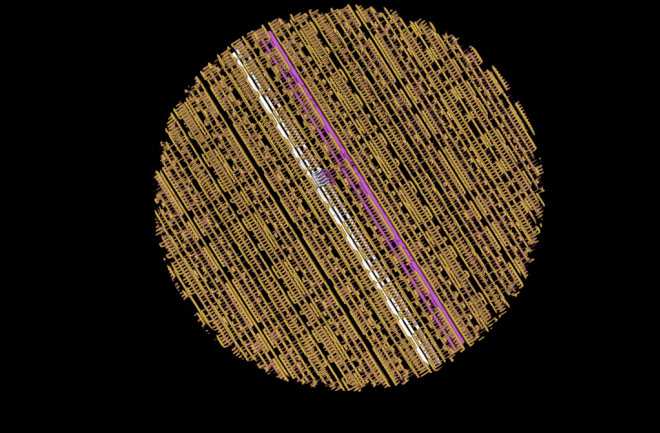A 3-D rendering of the internal structure of a microchip. The material in yellow is copper — showing the processor’s circuit connections which link the individual transistors. The smallest lines shown are individually around 45 nanometers wide. (Credit: Mirko Holler) Computer chips continue to shrink ever smaller, but we still wring more processing power out of them. One of the problems that comes with taking our technology to the nanoscale, however, is that we can no longer see what's going on with them. Computer chips, with their arrays of transistors laid out like cities, have components that measure as little as 14 nanometers across, or about 5,000 times smaller than a red blood cell. Checking out these wonders of engineering without using expensive and destructive imaging techniques is a challenge, to say the least.
A Glimpse of a Microchip's Delicate Architecture

Newsletter
Sign up for our email newsletter for the latest science news
0 free articles left
Want More? Get unlimited access for as low as $1.99/month
Stay Curious
Sign up for our weekly newsletter and unlock one more article for free.
View our Privacy Policy
Want more?
Keep reading for as low as $1.99!
Already a subscriber?
Find my Subscription
More From Discover
Recommendations From Our Store
Shop Now
Stay Curious
Subscribe
To The Magazine
Save up to 40% off the cover price when you subscribe to Discover magazine.
Copyright © 2023 Kalmbach Media Co.






